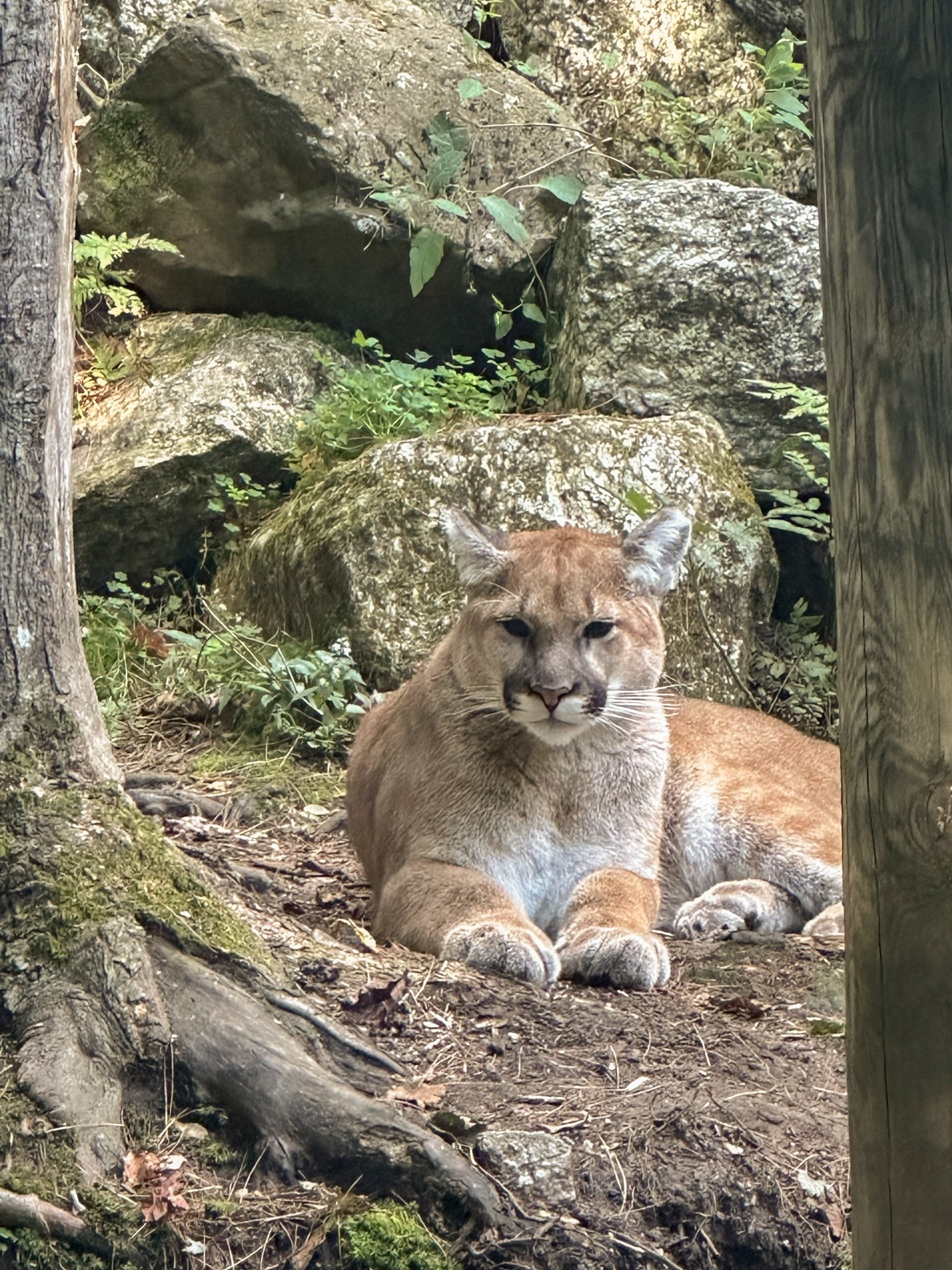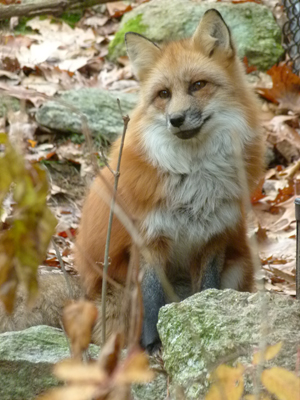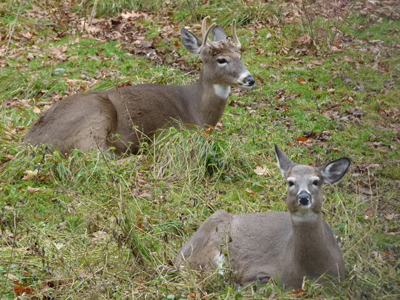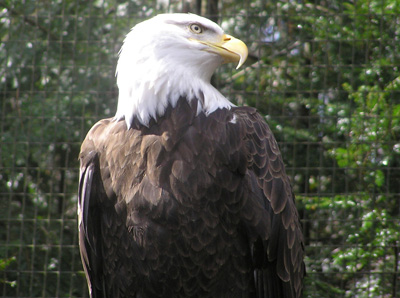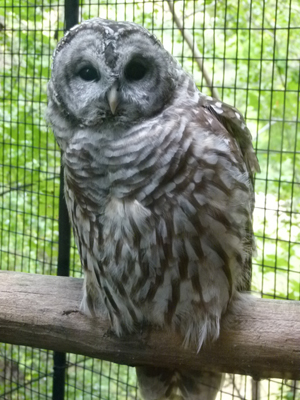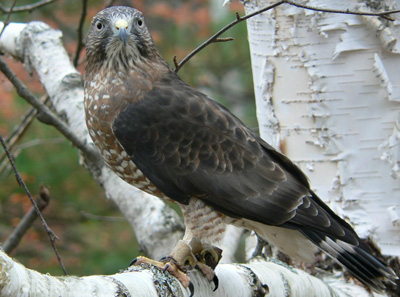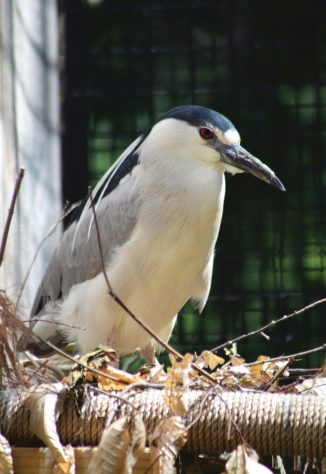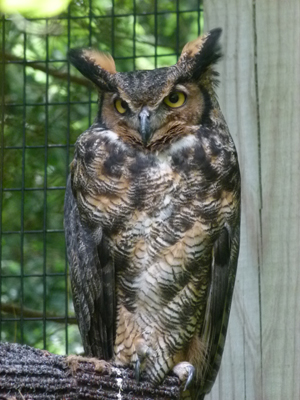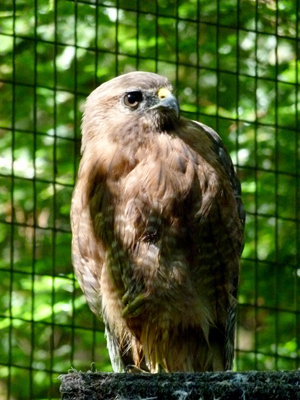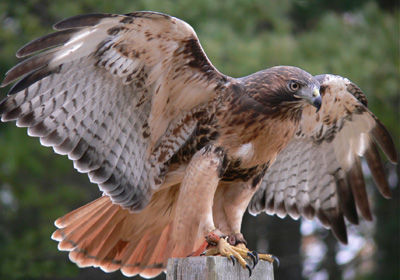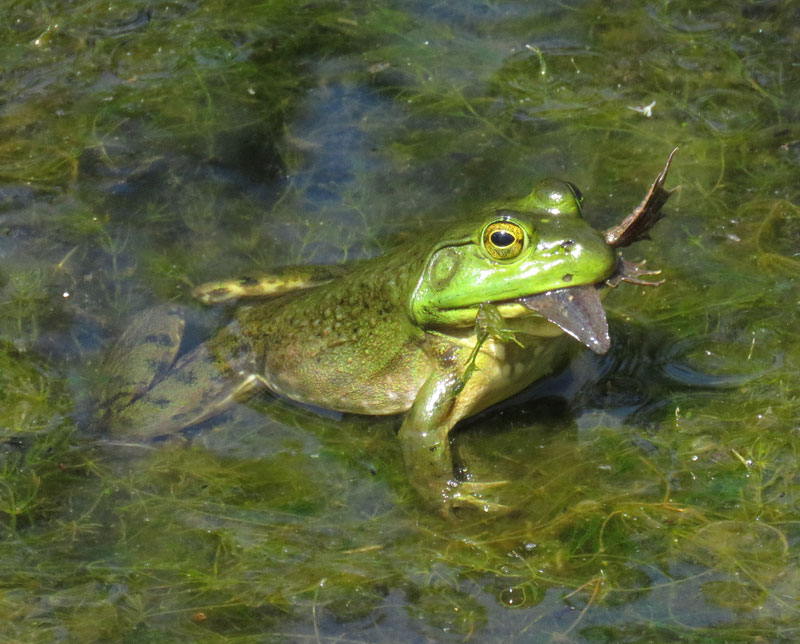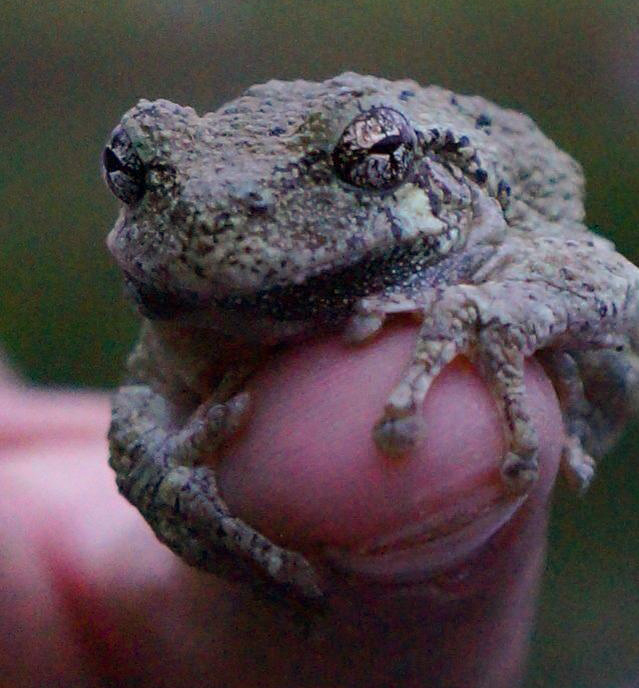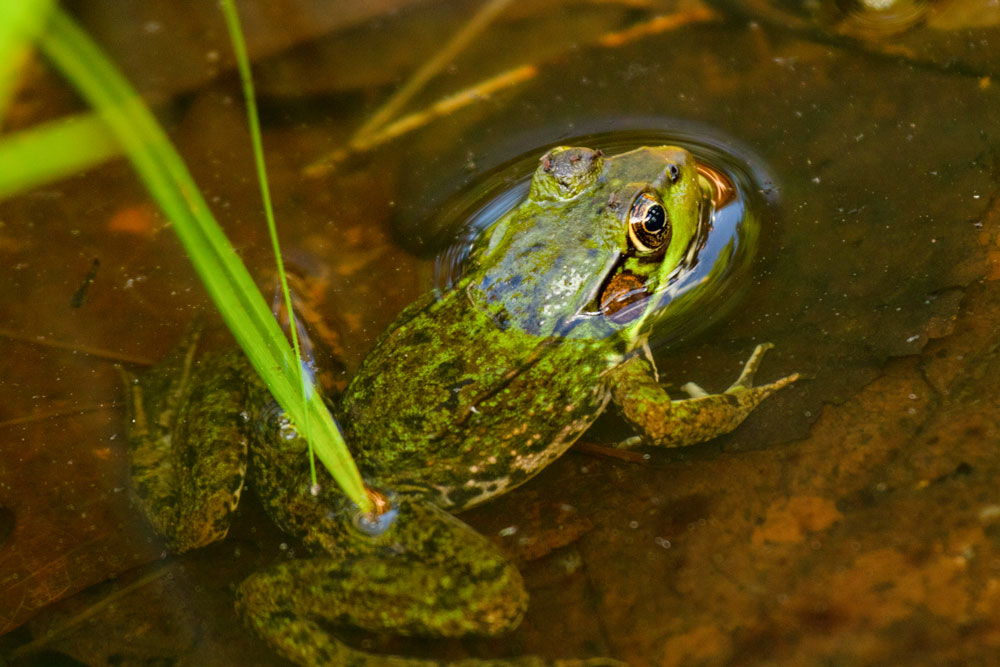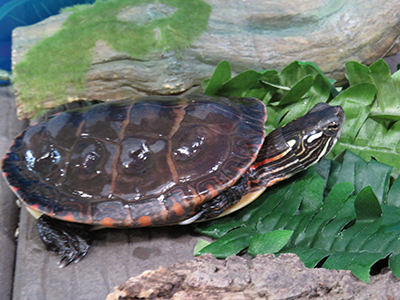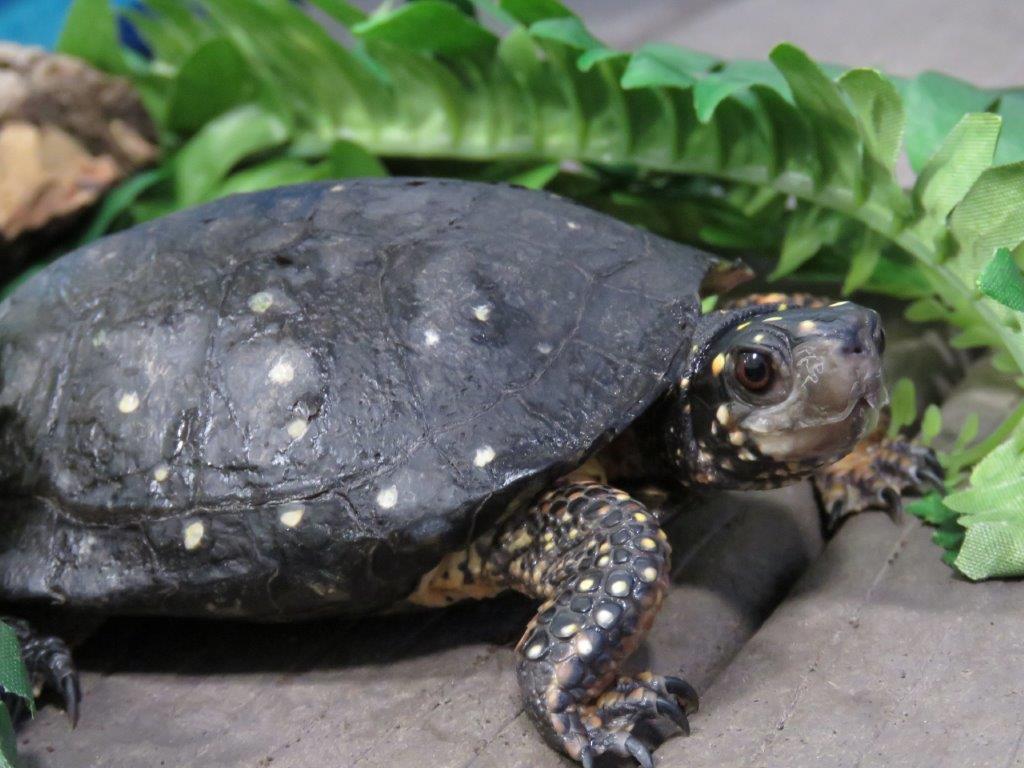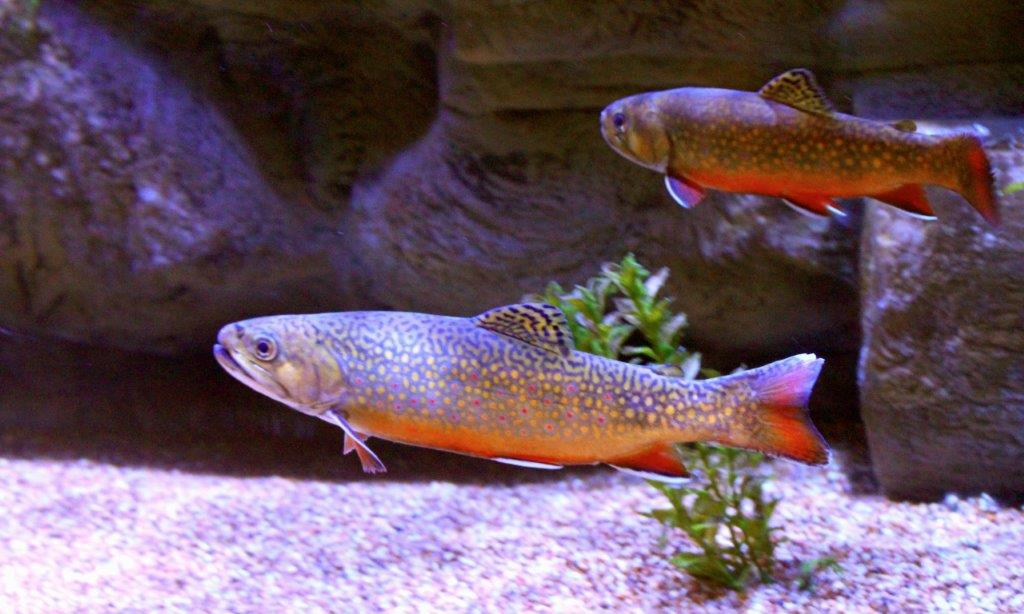Gray Fox
Urocyon cinereoargenteus
| Kingdom | Animalia |
|---|---|
| Phylum | Chordata |
| Class | Mammalia |
| Order | Carnivora |
| Family | Canidae |
| Genus | Urocyon |
| Species | U. cinereoargenteus |
| Lifespan | 6-8 years (max 12 years in captivity) |
| Size | 31-44 inches long, 12-16 inches at shoulder, weight 7-14 pounds (average 10-12 pounds) |
| Offspring | up to 7 kits (4-5 kits average) |
| Status | Common |
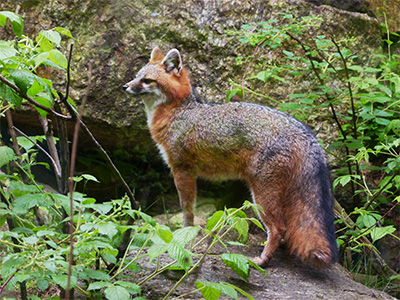
About Gray Foxes
What does a gray fox look like?
The gray fox is a small, lean animal, about 31 - 44 inches long including tail, and 12 - 16 inches in height measured at the shoulder. It can weigh from 7 to 14 pounds but 10 -12 pounds is average. Males are slightly larger than females. The gray fox is somewhat shorter than the red fox. Its face, back, and tail are a salt-and-pepper gray. It has a black stripe running down the top of its tail, and around the entire tail tip. Legs, flanks, and underside of tail are rusty red. Nose and muzzle are black. Throat, chest, and belly are white. Male and female gray foxes are colored alike. The pelt of the gray fox is coarser and less dense than that of the red fox, so its pelt has been less sought for fashion use.
Where do gray foxes live?
Gray foxes prefer dense hardwood or mixed hardwood/softwood forests, but will also frequent overgrown fields and woodland edges. Their home range is generally thought to be about 1 square mile, though some sources have reported as much as 4 square miles. Gray foxes seldom build underground dens; instead they use a hollow log or tree, a rock crevice, a wood or brush pile, or the space beneath outbuildings. They usually have several dens, and if one den is disturbed, they will move their kits to another den.
What do gray foxes eat?
The gray fox is an opportunist that eats a variety of animals and plants including mice, meadow voles, squirrels, chipmunks, eastern cottontail rabbits, ruffed grouse, opossums, young turkeys, quail, and occasional ducks. They will also eat crickets, grasshoppers and other insects. In season, they will eat strawberries, blueberries, blackberries, raspberries, huckleberries, wild grapes, apples, rosehips, and beechnuts, as well as corn and other grains. The gray fox will also eat fresh carrion. Its main predators include humans, coyotes, and bobcats. Great horned owls and golden eagles will prey on kits.
Do gray foxes have any special adaptations or behaviors?
The gray fox is more nocturnal than the red fox and hunts from late evening until dawn. It communicates through a variety of yips, barks, whines, and growls. The gray fox may use scent, sight and hearing in hunting. In its search for prey, the gray fox may use its keen sense of smell to identify the presence of prey, which it will stalk and then rush. It can also use its pointed, movable ears to locate small animals moving under snow or matted vegetation. It will then leap and pounce attempting to pin the prey with its forepaws. It uses sight opportunistically to capture insects in its path. Mated pairs hunt cooperatively.
The gray fox is the only North American canid capable of climbing trees. The gray fox uses its semi-retractable front claws to grasp a tree trunk while pushing upward with its back claws. When descending it can back down like a cat, or jump from branch to branch—a technique it also uses to avoid predators. Like the red fox, the gray fox uses urine and feces to mark its territory, and may leave scat in a conspicuous place in the middle of a trail. The scent of gray fox markings is not as strong as that of the red fox.
How many kits do gray foxes have?
The gray fox is monogamous during one breeding season, and the same pair may remain together through multiple years. Both male and female care for the young. In northern New England, the gray fox breeds between February and March, while in warmer areas, breeding may start in January. Gestation lasts 53 days and the kits are born in April or May. A litter usually consists of 3 - 5 young, which are born blind and helpless. Their eyes open in 9 - 12 days and the kits are walking in 3 weeks. They remain in the den until they are 4 - 5 weeks old. The vixen nurses the young until they are 12 weeks old and the male brings food to her and the kits. At the age of about 12 weeks the kits are weaned and follow their parents learning how to hunt. At 4 months, the kits have their full set of adult teeth and can support themselves, but remain with their parents into the fall. First-year mortality is high, but lifespan for surviving individuals is from 6 to 8 years, and up to 12 years in captivity.
Fun Facts!
- The gray fox is thought to be the oldest canid species, having originated at least 3.6 million years ago.
- To avoid pursuers, gray foxes take advantage of their climbing ability. They will run along the tops of fences, climb trees, and jump from branch to branch and tree to tree.
- When seen from a car at night or in a quick field observation, the gray fox may appear reddish due to its rusty flank coloration. But its black-tipped tail will easily differentiate the gray fox from the red fox, whose tail tip is white.






